Ask John: What’s the Rarest Anime John’s Ever Watched?
Question:
What’s the rarest anime you’ve ever seen?
Answer:
I have a tremendous affection for watching the biggest variety of anime I can: from the oldest modern anime to the most recent, and the most popular to the most obscure. I’m fascinated by the art of Japanese animation, so I enjoy seeing diverse incarnations of anime and witnessing how anime has changed and evolved over the decades. I watch a great deal of anime and watch many different anime because I enjoy doing so. I don’t watch anime or specifically seek out rare and obscure anime to make myself more elite or experienced than other fans. While I believe that first hand knowledge of a lot of anime broadens one’s knowledge of the genre, watching lots of obscure anime doesn’t automatically make one a superior otaku. Particularly in my case, I’ll readily admit that, in fact, I’ve watched numerous obscure anime which I entirely don’t recall at all. Either I watched these shows long ago and they’ve slipped my mind, or they weren’t especially memorable shows in the first place. In most cases, obscure anime are obscure specifically because they’re not good enough to be memorable. Particularly for foreign viewers, many anime which we consider rare and obscure are only such because they’re older titles or titles that fall into genres which haven’t been eagerly adopted by otaku outside of Japan.
I don’t like bragging, and as I mentioned, I don’t consider having watched lots of obscure anime a fact especially worth bragging about. However, once every few years I compose an especially self-indulgent “Ask John” response. This falls into that category. During the years that I’ve diligently followed anime, I’ve kept track of what I’ve watched. Upon reflection, that lengthy list includes numerous titles that average American otaku probably aren’t familiar with. Some of my memorable highlights include:
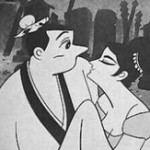
When American otaku typically think of early anime, we think of Tetsuwan Atom, Saiyuki, and Tetsujin 28. We also commonly associate late night anime with late 90’s shows like Elf wo Karu Monotachi and Eat-Man that launched the contemporary era of late night otaku anime. But I was very surprised by the first episode of Sennin Buraku, Japan’s third weekly television anime series from 1963. In the era which otaku typically associate with child friendly anime, Sennin Buraku surprised me with its adult references and playful sexuality.
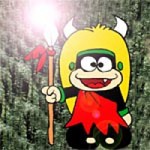
In 1989 the 1973 children’s slapstick comedy Jungle Kurobe was deemed racially offensive for its depiction of a petulant African, magic-using fairy. The anime TV series and its original manga by Fujiko F. Fujio were withdrawn from commercial distribution in Japan and have remained unavailable since. I didn’t know that several years ago when I was fortunate to watch the TV series’ first episode. But even without knowing that the show had been banned, I clearly recall being shocked by its racial insensitivity.
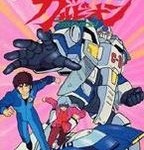
First time director Koichi Ohata (Bakuretsu Tenshi, Ikkitousen) helmed the 1984 robot anime TV series Cho Kosoku Galvion. The show was canceled after 22 episodes and has never been released on commercial home video. So I’m grateful to have had an opportunity to at least watch the complete final episode, which, to me, seemed little different in quality from other early 80’s robot anime like Video Senshi Lazerion and Tokuso Kihei Dorvack.
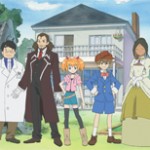
Even since the advent of the digital age of anime fandom, some shows still slip under the radar. I remain pleased that I was able to find and watch the first episode of Trans Arts’ (Gokudo-kun Manyuki, Kemono no Souja Erin) five-episode 2008 educational sci-fi adventure TV series Rocket! Bokura wo Tsuki ni Tsuretette Shin Tsuki Sekai Ryokou. The show was about a trio of adventurers from 1882 London that get magically transported to 2080 Japan, where they take a rocket shuttle to visit the moon.
Other relatively obscure TV anime that I’ve been lucky enough to watch one or more episodes of include: Toei’s Fatal Fury rip-off Shinken Densetsu Tight Road, Tensai? Dr. Hamax (literal canned puppies!), High School Mystery: Gakuen Nanafushigi, Kuma no Putaro, Totsugeki! Paparatai, Gyouten Ningen Batsealer, Karaoke Senshi Mike-jirou, Dotto Koni-chan, Chikkun Takkun, Chingo Muchabei, Sabu to Ichi Torimono Hikae, Super Zugan, Submarine Super 99, and Oyoneko Bunyan.
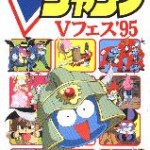
Given the massive Japanese popularity of the Dragon Quest frachise, it’s surprising that there isn’t more existing Dragon Quest anime. Slimes are the signature Dragon Quest monster, yet they don’t appear much in the most familiar Dragon Quest anime. I’m disappointed that Production I.G’s 1995 V-Jump Festa Dragon Quest short anime movie Slime Boukenki isn’t better known because it’s a very fast paced and funny fantasy adventure comedy in which a slime, played by Megumi Hayashibara, takes center stage as the hero. (Production I.G produced additional Slime movies in 1998 & 1999, but I haven’t been able to watch them.)

The two 1992 Hayou no Ken: Shikkoku no Mashou fantasy OVAs remain in my mind because the series follows so closely in the footsteps of the earlier and better 1989 Legend of Lemnear OVA. (If I’m not mistaken, the Legend of Lemnear OVA was released on July 25, 1989, and the first Hayou no Ken novel was released on November 2, 1989.)

I don’t recall the obscure 1997 OVA Kigyo Senshi Yamazaki being very exciting or interesting, but it sticks in my mind because of its unique English language title: Business Commando Yamazaki: Long Distance Call.

AIC’s 1987 OVA Katte ni Shirokuma is an interesting one because it’s a post-apocalyptic story without humans. The comical OVA follows the exploits of a family of unusually intelligent bears that stumble upon what seems to be the last remaining human, preserved in suspended animation.

I can’t ever forget the first 1997 Alice in Cyberland OVA because despite its cool title, it’s quite awful, and it has nothing at all to do with a cyberpunck Alice in Wonderland.
Other rare and forgotten OVAs and movies I’ve been fortunate (or in some cases unfortunate) to watch have included the 1996 Dragon Quest Retsuden: Roto no Monsho movie, the 1997 Soliton no Akuma supernatural sci-fi disaster movie, the first Ganbare Tabuchi-kun baseball comedy movie, the 1992 Rokudenashi Blues “yankee” movie, and the Shin Shyusudama Hen, Phantom Yusha Densetsu, Satsujin Kippu wa Heart-iro, Apfelland Monogatari, Ai to Ken Camelot: Mangaka Marina Time Slip, Download, Yume Kara Samenai, Cinderella Express, Emblem Take 2, Rayca, Sabaku no Takara no Shiro, Yajikita Gakuen Douchuuki, Neko Neko Fantasia, and Scoopers OVAs.
Add a Comment
You must be logged in to post a comment.


John, have you seen any of the Ghibli museum shorts and, if so, would they not constitute rare anime? I mention them because none of them are available on any type of home video and one would actually have to go out of ones way to Mitaka, Japan to view one. It would even be difficult for a person living in Japan to view them all since they rotate the movies every so often.
The 1999 Slime Adventures short can be seen on the Catsuka website. It has some “sakuga” interest because Masaaki Yuasa (in his “cat soup” mindset) and Shinya Ohira were behind it. A friend & I briefly considered fansubbing it, but the dialogue was not actually that interesting or essential.
Good article. Rare and/or obscure anime are also an obsession of mine; fittingly, I just came across a copy od Rintaro’s Download some months ago after fruitless years of search… happy.
John, are Yumemakura baku twilight gekijô and the 1988 OAV Yousei-ô also considered rares ?
I’ve been to the Ghibli museum twice and been fortunate enough to watch the Mei to Konekobus and Koro no Dai Sanpo short movies. These films may not be especially easy to access and watch, but since they are still current, I think they’re more appropriately considered “exclusive” than “rare” or “obscure.” Thus I didn’t mention them.
Thanks for the pointer to the ’99 DQ movie. Particularly since it’s Masaaki Yuasa anime, I’ll go look for it today.
Sure. I’d call Twilight Theater pretty rare. I haven’t seen it (not that me having watched it or not determines rarity). I’m not even sure that I’m familiar with a 1988 “Yousei-ou” OVA. Of course, what really constitutes “rare” is pretty subjective. I’m really thrilled to have been able to watch the Yonimo Osoroshii Grimm Douwa OVA, which is almost entirely unheard of in America, yet it’s available on Japanese DVD.
Interesting read. I share the fascination of obscure anime, especially OVAs. Why is a bit of a mystery for myself because, as you said, most are forgotten for a good reason. (Especially the stuff based on Seinen manga. I’ve recently watched an episode of “Korogashi Ryouta”, which is about a bad-ass… bus driver.)
I’ve seen quite a few of which you listed there. Nice to see you gave “Katte ni Shirokuma” some spotlight, that’s one show that doesn’t deserve it obscure status. It was a lot of fun (and Shirokuma and that piglet kinda reminded me of Beavis & Butthead).
A recommendation for fans of rare stuff is to sign up at NicoNico Douga, a japanese version of YouTube. There’s a lot stuff to be found there, including several of the titles mentioned here.